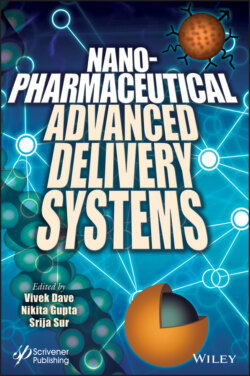Читать книгу Nanopharmaceutical Advanced Delivery Systems - Группа авторов - Страница 58
2.5 Conclusion
ОглавлениеNanoscale approaches used for delivery of drugs and diagnosis of diseases have revolutionized the treatment regimens used for life-threatening diseases. The nanoparticulate drug carriers provide multifunctional platforms that can be tailor-made to suit the requirements of the disease and the patient. Like any other technology, nanotechnology-based approaches also require a lot of precision and care in their use. Extensive studies, however, need to be carried out to exploit their full potential to our advantage. The nanoparticulate carriers have been studied in almost every disease, and extensive commercial exploration is happening globally in biological, medical, and diagnostic fields. Majority of the companies are involved either in large-scale manufacturing of semiconductor-based quantum dots for diagnostic or ceramic-based nanoscaffolds for tissue engineering or orthopedic applications. Clinical applications of ligand targeted nanoparticulate carriers containing anticancer drugs have been highly successful in comparison to other diseases. Also, nanoparticulate carriers have invested confidence in clinicians for the treatment of brain disorders, which were conventionally considered as untreatable due to poor availability of drugs in the cerebral region because of the presence of blood brain barrier.
The therapeutic success of nanocarriers can be estimated from the growing market presence of nanoparticulate formulations like Megace ES (Enhanced Stability), Estrasorb (estradiol topical emulsion), and Triglide (nanocrystal formulation of Tricor). Also, surface engineered nanoformulations of doxorubicin and taxol are being used clinically because of their longer half-lives and reduced side effects [109]. Food and Drug Administration (FDA) has also issued several guidance documents for application of nanotechnology or nanomaterials to FDA-regulated products as part of its ongoing FDA’s Nanotechnology Task Force Report, 2007.
